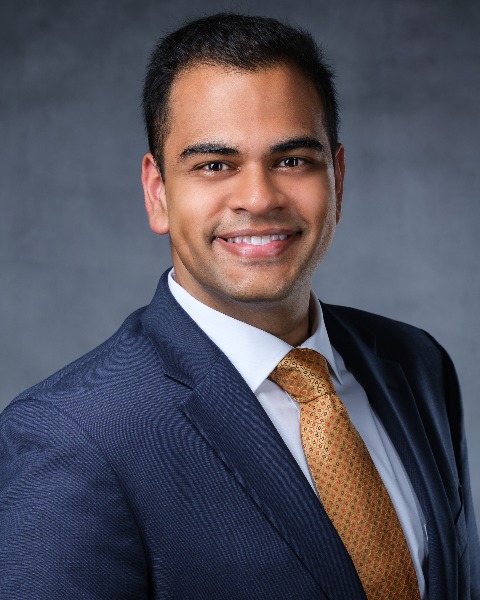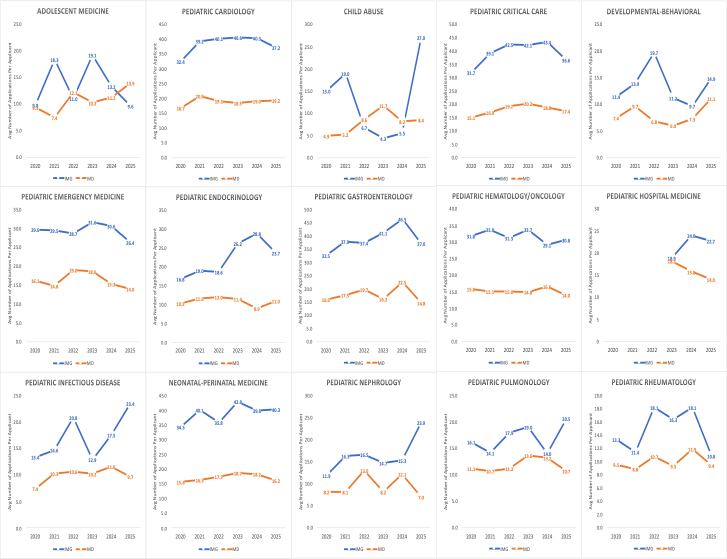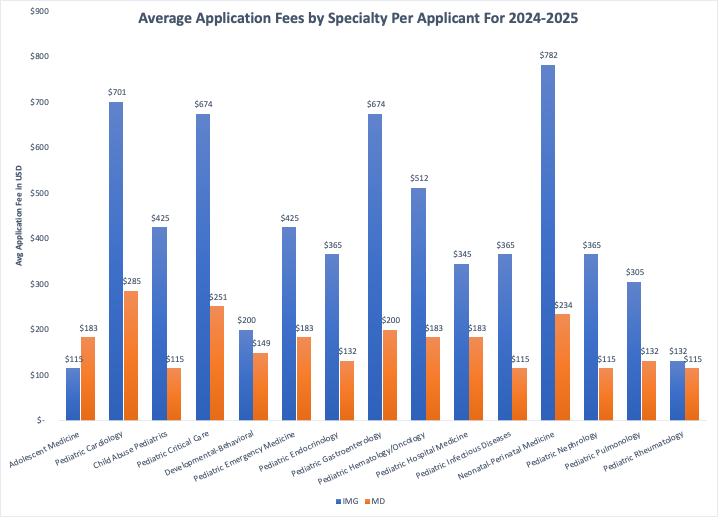Medical Education 12: Global health, advocacy, and leadership
Session: Medical Education 12: Global health, advocacy, and leadership
259 - Global Aspirations: Investigating Pediatric Subspecialty Fellowship Application Trends Among International Medical Graduates
Monday, April 28, 2025
7:00am - 9:15am HST
Publication Number: 259.5372
Akif Shameem, The Brooklyn Hospital Center, Brooklyn, NY, United States; Noah P. Kondamudi, THE BROOKLYN HOSPITAL CENTER, Brooklyn, NY, United States

Akif Shameem, MD (he/him/his)
Resident Physician
The Brooklyn Hospital Center
Brooklyn, New York, United States
Presenting Author(s)
Background: According to the American Academy of Pediatrics, international medical graduates (IMGs) constitute 23.2% of the pediatric physician workforce. Securing a residency position has long been recognized as a significant challenge for IMGs. In the 2023-2024 pediatric residency application cycle, the National Resident Matching Program reported 1,617 US MD applicants with a match rate of 91%, compared to 1,180 IMG applicants with a match rate of 62%. However, while much is known about the difficulties faced during the residency application process, less attention has been given to the challenges IMGs encounter when pursuing fellowship training.
Objective: This study aims to compare pediatric subspecialty applications trends between US MDs and IMGs.
Design/Methods: We analyzed AAMC fellowship applicant data from 2020 to 2025 across all 15 American Board of Pediatrics (ABP) subspecialties. Our analysis included the number of applicants, the average number of applications per graduate, and average application fees per graduate for 2025. Results were stratified by US MD graduates and IMGs (including both US citizen and non-US citizen IMGs). Statistical analysis was conducted using Welch’s T-test, with a significance threshold of p < 0.05.
Results: Between 2020 through 2025, there were 2,815 IMGs and 6,127 US MD graduates applying for pediatric subspecialties. The average number of IMG applicants per year was statistically lower than that of US MD applicants per year across all ABP subspecialties, except for pediatric endocrinology. Meanwhile, IMGs submitted statistically more applications on average across all subspecialties, except for adolescent medicine and child abuse pediatrics. For the 2024-2025 cycle, IMGs applicants spent more on application fees across all subspecialties, except for adolescent medicine.
Conclusion(s): Our findings indicate that although IMGs represent a smaller proportion of fellowship applicants, they typically apply to more programs and incur higher application fees compared to US MD graduates across most ABP subspecialties. While over-application has been recognized as a persistent issue in the residency match process, leading to initiatives such as program signaling and geographic preferences, our results demonstrate that application inflation extends into fellowship training and disproportionately affects IMGs. Given the growing shortage of pediatric subspecialists, targeted efforts are needed to reduce barriers to fellowship training for all pediatric trainees.
Pediatric Subspecialty Applicants From 2020 - 2025
.png)
Average Number Of Fellowship Applications Per Applicant Type From 2020 - 2025

Average Application Fees by Specialty Per Applicant For 2024-2025


